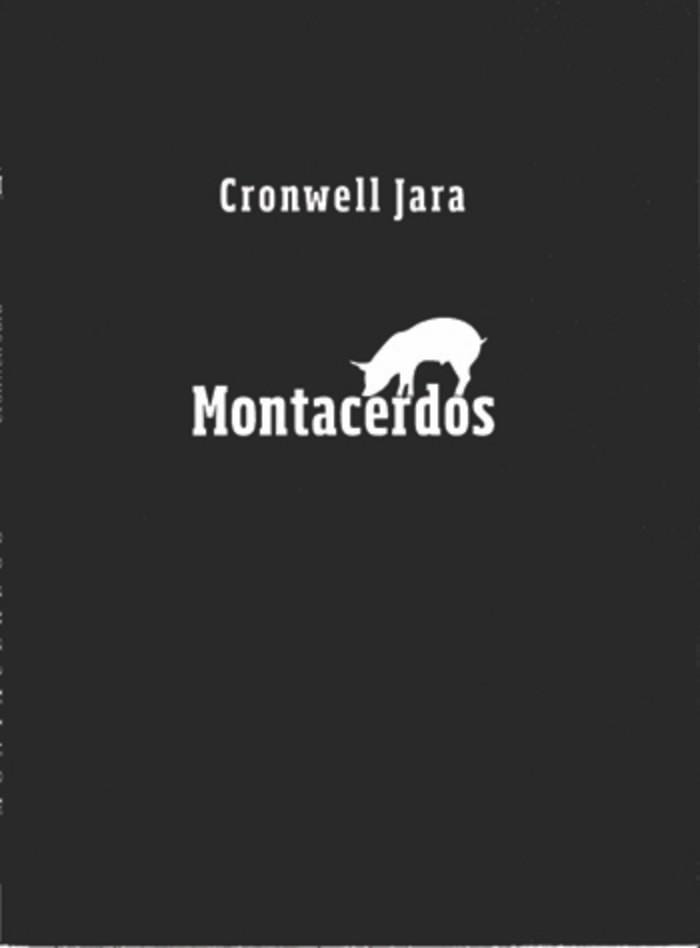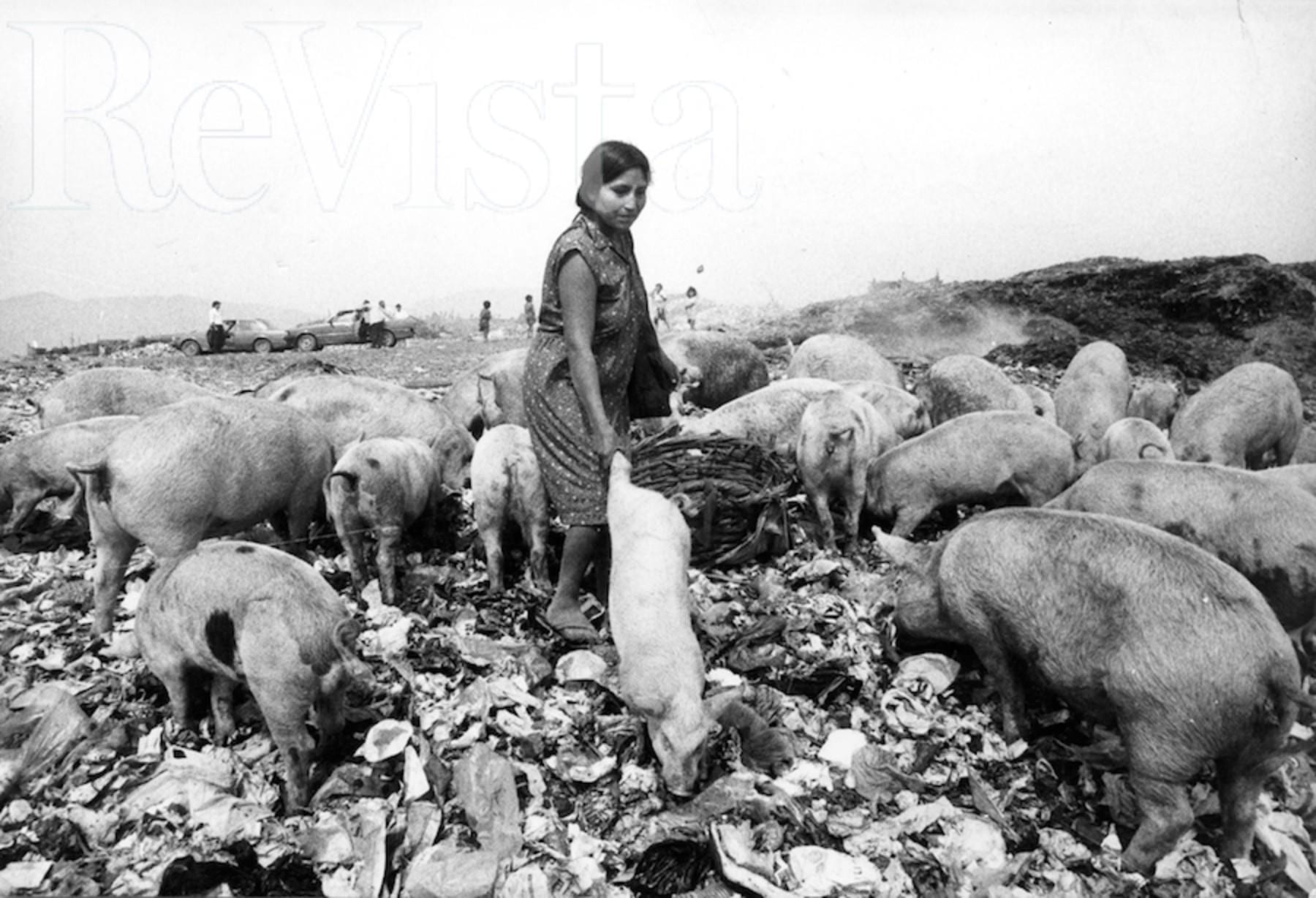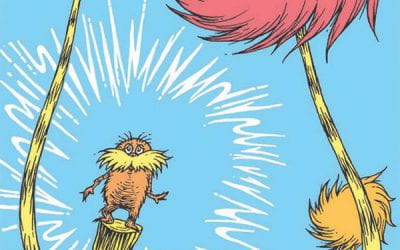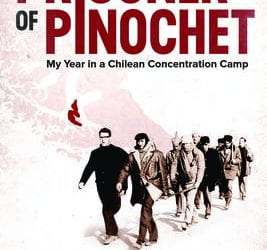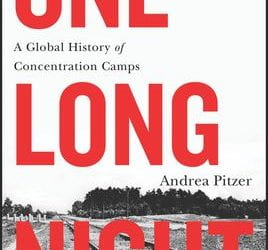Who More Cli-Fi than Us?
The Climate-Change Lessons of Andean Literature
When I tell people that I research climate change and literature, they usually start asking me about novelists like Kim Stanley Robinson, Claire Vaye Watkins or Jeff VanderMeer. It makes sense. Climate fiction—or cli-fi—that depicts the earth after some kind of future weather-induced apocalypse seems like a natural starting point for a literary study of climate change. In response, I could explain that I don’t work on an English-language corpus, but there are Latin American equivalents to those Anglophone bestsellers, like Edmundo Paz Soldán (Iris, 2014), Pedro Mairal (El año del desierto, 2005) and Roberta Spindler (“Sol no Coração,” 2013), to name a few. But I don’t study these authors either.
The narrator of The Brief Wondrous Life of Oscar Wao, Yunior de las Casas, asks a question that reveals how Latin American fiction is relevant to climate change: “Who more sci-fi than us?” Colonial trauma, its aftermath and the radical shifts of the immigrant experience all motivate Yunior’s question. Because colonial genocide went hand in hand with ecocide, the devastation of ecosystems on which indigenous American ways of life relied, I like to rephrase Yunior’s question to include our environmental past. So, I ask, who more cli-fi than us?
Indigenous peoples and their mixed-race (mestiz@) descendants across the two American continents and the Caribbean have lived through more than one ecological apocalypse—first in the colonial period and then in the different stages of 20th- and 21st-century industrialization. By examining the ecological histories intertwined with human ones, we open up new possibilities for the interpretation of Latin American cultures and their literary representations in discussions about climate change. In addition to documenting a brutal history of violence against indigenous and mestiz@ peoples and ecosystems, natural-cultural histories of Latin America demonstrate how to grieve and build resilience in the face of personal, cultural and ecological loss.
By way of example, I will turn to Andean literature. The mountains themselves, a shared colonial history as part of a major Spanish viceroyalty, ongoing extractive mining operations in places like Potosí and multiple vibrant indigenous cultures unite this region as a category for academic study. One of those indigenous cultures is that of the Quechua people, or runa, and one runa story is Montacerdos (Pigrider), a novella written in Spanish and Quechua and first published in 1981 by the Peruvian author Cronwell Jara.
In Jara’s novella, a young mestiza child recalls the events following the journey she undertook with her older brother, Yococo, and their mother, Griselda, from an unknown location in the Andes to a fictional shantytown outside of a major Peruvian city, based on the Rímac district in Lima. Montacerdos begins when Yococo, Griselda and Maruja arrive at the outskirts of the city and assemble their home made of cardboard and rags. As Maruja puts it, in the forbearing tone that characterizes her voice, “Traíamos nuestra casa en hombros” (We were carrying our house on our shoulders). The residents of the neighborhood, also recent arrivals to the metropolis, shun Maruja and her family because of their poverty, extreme even for the shantytown, and because migration to Lima occurred over the course of decades, which created hierarchies of belonging even among the disenfranchised squatters.
Eventually, a woman named Doña Juana invites them to live in a corner of her adobe house, where the protagonists fare better for a short time. Then Juana’s husband repeatedly rapes Griselda while her nephew plays sadistic games with Yococo and forces Maruja to watch. Yococo dies after being trampled by the hooves of policemen’s horses and, shortly afterwards, Griselda dies after miscarrying the fetus that was the product of rape. The novella concludes with Maruja’s expulsion from Juana’s house, because she is coughing up blood, and Maruja ends up living alone on the street.
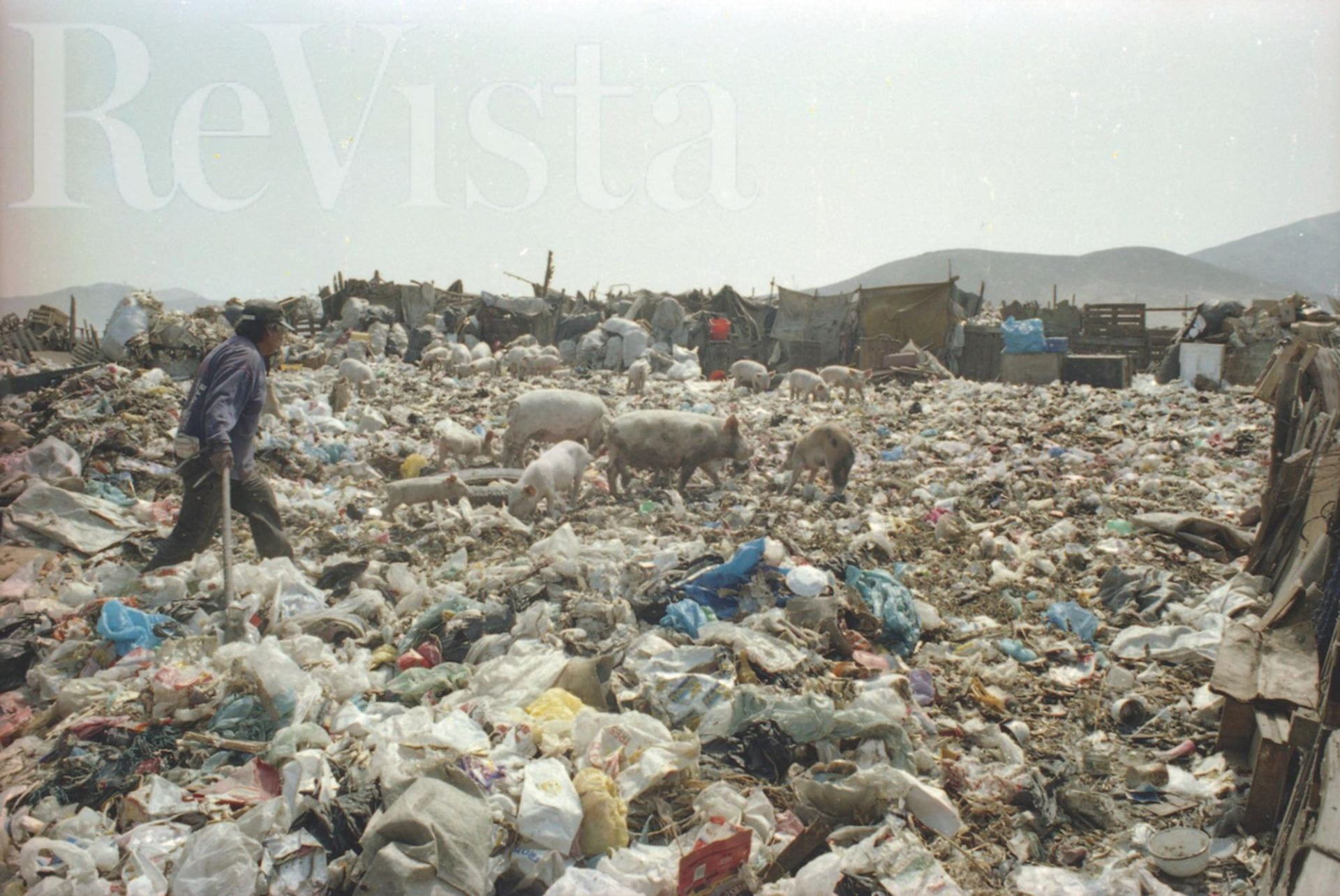
Pigs forage in Playa Rimac, Callao, Lima (1999-2000). Photo by Paul Vallejos/Ojos Propios/ILAS, Columbia University.
That this would be an apocalyptic experience for any child is only partially the point. It is equally important that children like Maruja regularly live through this kind of tragedy. How they do it renders their stories especially meaningful within the context of climate change, because what we are losing now—homes, forests, entire species, ways of life—portends a vaster series of losses in the future. The story of this migrant mestiza child holds lessons for how to acknowledge loss and get on with living.
Montacerdos could be summarized—equally accurately—as a novella about the family’s loving and tender friendship with a large-eared pig named Celedunio. In this alternative summary, Yococo encounters an underfed pig who nuzzles him out of curiosity. They immediately become friends and play around the neighborhood together until, one day, a starving Griselda threatens to eat Celedunio. He and Yococo run away, only returning after Griselda accepts Celedunio as her child and promises never to threaten him again. From then on, Celedunio accompanies the family, especially Yococo, as they pull pranks, play music and eke out a living.
This alternative interpretative focus underscores that resilience can be built on interspecies kinship. In placing a pig in the position that traditionally belongs to canine companions, Jara points out the way Peruvian society equates poor Quechua-speaking mestiz@s with trash and simultaneously repudiates that racist colonial inheritance by imbuing the interspecies kinship with tremendously moving affect and vitality. This authorial choice not only denounces racial, economic, cultural, linguistic and gendered injustice and oppression, but also suggests that joy and endurance can be found in unexpected places. Because of Celedunio, the family lives happier than they otherwise would, and, because of the family, Celedunio does too. That this relationship does not save Yococo or Griselda from their deaths does not diminish its power to bring happiness and love into their lives as they struggle through rending poverty. Indeed, after other children see Yococo riding on Celedunio around the neighborhood, they begin to ride pigs too. (Wonderfully, Jara himself engaged in this activity as a boy.) Pig-riding is the hobby that eventually gives the town and the novella their name. In the end, the interspecies alliance is the primary way in which the family makes their presence felt in a city that otherwise devalues and brutalizes them.
Jara knows much of the maltreatment and happiness that are parts of daily life in Lima’s peripheries. Born in 1950 in Piura, a northwestern province of Peru, like his characters, Jara moved to Rímac with his family at the age of five and grew up speaking Spanish and Quechua. He recalls witnessing child abuse, murder, gang rape, the premature deaths of teenagers and adults due to preventable or easily cured diseases, suicide, drug trafficking, alcoholism, the effects of protracted hunger and exposure during his childhood and adolescence—all among moments of solidarity, ordinary chores and play.
In moving to Lima, Jara and his family were participating in a demographic shift that reshaped Peruvian society in the second half of the 20th century, whose cascading effects the author would later portray in much of his fiction. Although in Montacerdos the migration itself takes place off-page, as it were, it is the reason Maruja and her family find themselves in an urban setting, and the causes and conditions of Peru’s mass migration impact every facet of the family’s experience once they arrive.
The seminal work on Peru’s demographic upheaval, José Matos Mar’s Desborde popular (Popular Flood), identifies the country’s colonial legacy as a significant underlying basis of the mass migration of mostly indigenous and mestiz@ Peruvians from rural Amazonian and Andean regions to coastal cities. The economic policies implemented by the military dictatorship of President Manuel A. Odría (1948-1956) concentrated the economic and political capital generated by industrialization along the coast, the historical site of colonial power. Staying in the Andes, meanwhile, often entailed laboring under a centuries-old servitude on land that always belonged to someone else. Matos Mar links these conditions to the internal domination of the urban-coastal-criollo over the rural-Andean-indigenous that the colonial regime—and, later, the new republic—imposed.
Economic and racist policies, along with governmental neglect, were not the only factors that influenced the outcome of Peru’s internal migration, however. Nature does not vanish at city limits, in spite of the common tendency to associate it with the rural. An earthquake in 1940 demolished much of the available housing in Lima, creating a large number of homeless families and a housing shortage just as migration from the provinces began. Those displaced Lima residents and recent migrants found their housing options together dictated as much by ecology as by the market. Families like Jara’s and Maruja’s could find room to settle primarily on the city’s outskirts, which were uninhabited precisely because they were not environmentally suitable for construction or agriculture. In contrast, the long-settled regions of Lima are built on a literal oasis. The economic and emotional precariousness of Maruja’s childhood extends down to the sandy, arid soil where her family tries to build a home. Ecology, industrialization and colonial legacies mutually determine each other in the natural-cultural history of Peru’s internal migration and the world Jara imagines in Montacerdos.
The economic forces that sparked Peru’s rural-to-urban demographic shift and the environmental forces that directed the resulting urban sprawl also have direct parallels with the way climate change is currently changing societies around the world. Simply put, climate change means more humans will be temporary or permanent migrants. According to a 2015 report published by the International Displacement Monitoring Centre and the Norwegian Refugee Council (IDMC-NRC), between 2008 and 2014 “an average of 26.4 million people have been displaced from their homes each year by disasters brought on by natural hazards—equivalent to one person displaced each second. […] 17.5 million people were displaced by disasters brought on by weather-related hazards in 2014” alone, sometimes permanently. Additionally, the probability of being impacted by an environmental disaster has been growing over the past 40 years. The IDMC-NRC report links this increased probability to higher levels of exposure and vulnerability, which have, in turn, been driven by the exponential rate and unplanned form of urban population growth in cities like Lima.
The fact that displacement of an economic kind often instigated this worldwide rural exodus and concomitant unplanned urban growth adds a note of bitter irony, for climate change only compounds the spatial, social and economic marginalization of urban inhabitants like Jara’s characters, in countries developing or otherwise. For these reasons, the effects of unplanned urbanization so carefully depicted in Montacerdos and actually lived by Jara cannot be clearly separated from climate-related displacement. The causes and consequences of economic and environmental displacement have merged so thoroughly over the past decades as to become nearly indistinguishable, leading both environmental philosophers and advocacy groups to begin to question the utility of the distinction.
When I read Montacerdos, I keep the contemporary blurriness of these categories in mind. Embracing that blurriness allows me to see Maruja, Yococo and Griselda’s migration and marginalization as inseparable from biophysical and geological processes, like earthquakes and soil quality, rather than viewing them as exclusively human phenomena cut off from natural history. It also allows me to see the stories of these slums as part of the story of climate change: why it manifests itself the way it does, who it disproportionately impacts and why, and why it is happening in the first place. The history of coloniality, industrialization and the environment overlap and converge in a way that allows Jara’s tale of a migrant mestiz@ family in mid-century Peru, moving due to economic forces far beyond their control or possible realm of agency, to read as a parable for our current experience of climate change. What a novella like Montacerdos offers is an alternative, one option among many that we will need, for how to endure with precarious multispecies joy during the struggles and migrations to come.
Fall 2018, Volume XVIII, Number 1
Patricia Valderrama is a Ph.D. Candidate in Comparative Literature at Stanford University. She researches 20th-century German, French and Latin American literatures and philosophies with a focus on representations of humans’ interactions with the more-than-human world, also known as nature. After completing her Ph.D., she hopes to share the solution-oriented storytelling she has developed to help build more sustainable societies. She is happiest when she is in the forest, and can otherwise be reached at patricia.i.valderrama@gmail.com.
Related Articles
Words that Matter
Those of us with little children often read The Lorax by Dr. Seuss to them at bedtime. The story points toward the past, because the Lorax is a ruin, with only residues remaining of something…
Prisoner of Pinochet: My Year in a Chilean Concentration Camp
English + Español
On September 11, 1973, at about eight o’clock in the morning, Sergio Bitar, one of Allende’s top economic advisers and the Minister of Mining, received a phone call from a colleague: the
One Long Night: A Global History of Concentration Camps
English + Español
In One Long Night: A Global History of Concentration Camps, Andrea Pitzer offers a thoughtful combination of investigative journalism and historical analysis that identifies the roots and


